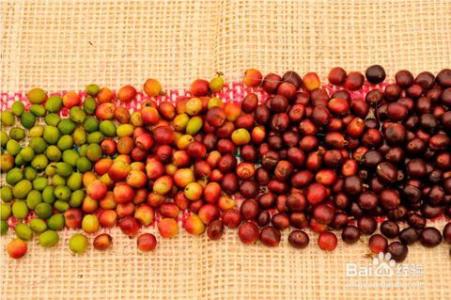A brief description of the regional flavor of Costa Rican St. Roman coffee beans with good acidity and sweetness
The famous Tarasu of Costa Rica
The drop at high altitude causes sufficient rainfall, which is also very beneficial to the growth of coffee trees. However, while growing coffee at higher elevations has many advantages, the additional transportation costs must be taken into account, which is likely to make coffee production unprofitable.
Although the development of boutique coffee started relatively late, but now Costa Rican boutique coffee is developing rapidly, with honey-treated mild acidity, soft taste and sweet high-quality berry flavor, it is not to be underestimated. And the so-called honey treatment method means that when the coffee bean is washed to remove the peel and flesh, the remaining part of the pectin flesh is selected for another fermentation process, which is called honey treatment.
Tarasu, south of SanJose, the capital of Costa Rica, and the producing areas of the central and western valleys. Among them, there are many excellent independent estates, all of which are carefully cultivating more fine washing and honey-treated coffee beans. let's hope that Costa Rica will bring us more honey-treated coffee surprises.
Costa Rica has a deep coffee culture, superb coffee skills, and produces world-class high-quality coffee. Whether in terms of innate environmental advantages or acquired efforts to produce high-quality coffee, Costa Rica can be called an excellent coffee producer.
Costa Rican coffee is called "extra hard beans". This kind of coffee can grow at an altitude of more than 1500 meters. Altitude has always been a problem for coffee growers.
The higher the altitude, the better the coffee beans, not only because the higher altitude can increase the acidity of the coffee beans and thus increase the flavor, but also because the night temperature at the higher altitude is lower.

Important Notice :
前街咖啡 FrontStreet Coffee has moved to new addredd:
FrontStreet Coffee Address: 315,Donghua East Road,GuangZhou
Tel:020 38364473
- Prev

Introduction to the taste of El Salvador Himalayan boutique coffee beans which are very soft and pure
The Himalayan Manor, located in Santa Ana, a famous producing area in the Apaneca Mountains at an altitude of 1500 meters, is one of the few estates managed by Aida Batlle. The varieties planted are mainly Salvadoran coffee, along with Mexico and Guatemala as the producers of Asa and Merdo, and are fighting for the top one or two places in China and the United States with other countries. Highland of origin
- Next

Introduction of Katim CIFC7963 Coffee beans belonging to small grains
Katim CIFC7963 coffee beans belong to the small seed species Katim CIFC7963 (F6) has been widely planted in Dehong, Baoshan, Pu'er, Xishuangbanna, Lincang, Wenshan and Yuxi in Yunnan coffee growing areas, as well as Panzhihua in Sichuan Province and neighboring Myanmar, with a total extension area of more than 200,000 mu. Typica: the oldest in Ethiopia
Related
- Detailed explanation of Jadeite planting Land in Panamanian Jadeite Manor introduction to the grading system of Jadeite competitive bidding, Red bid, Green bid and Rose Summer
- Story of Coffee planting in Brenka region of Costa Rica Stonehenge Manor anaerobic heavy honey treatment of flavor mouth
- What's on the barrel of Blue Mountain Coffee beans?
- Can American coffee also pull flowers? How to use hot American style to pull out a good-looking pattern?
- Can you make a cold extract with coffee beans? What is the right proportion for cold-extracted coffee formula?
- Indonesian PWN Gold Mandrine Coffee Origin Features Flavor How to Chong? Mandolin coffee is American.
- A brief introduction to the flavor characteristics of Brazilian yellow bourbon coffee beans
- What is the effect of different water quality on the flavor of cold-extracted coffee? What kind of water is best for brewing coffee?
- Why do you think of Rose Summer whenever you mention Panamanian coffee?
- Introduction to the characteristics of authentic blue mountain coffee bean producing areas? What is the CIB Coffee Authority in Jamaica?

